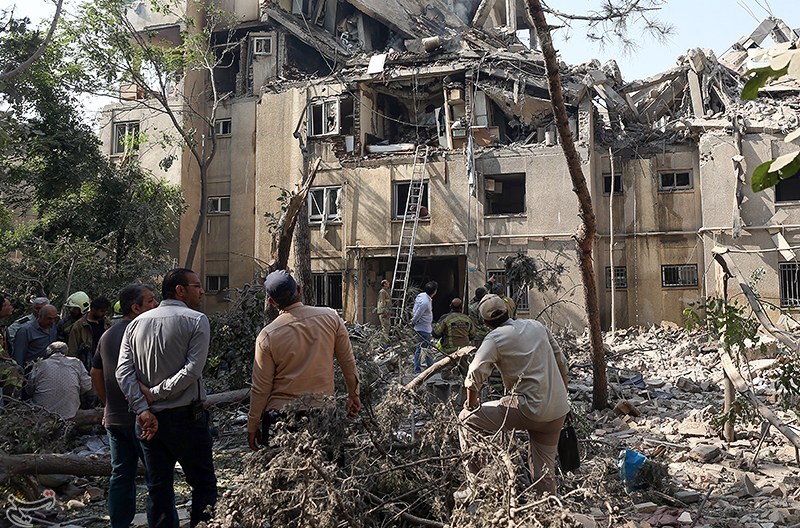
(Scypre.com) – The Israel-Iran conflict has now entered its second week, escalating from targeted strikes to full-scale regional warfare. What began on June 13 as an Israeli retaliation for alleged Iranian-backed proxy attacks has rapidly developed into one of the most dangerous confrontations the Middle East has seen in years. The current phase includes Israeli airstrikes deep into Iranian territory and direct Iranian missile attacks on Israeli cities. As the violence intensifies, world leaders and organizations are rushing to prevent the outbreak of a broader war.
Over the past 48 hours, Israel has launched targeted bombing raids on military and nuclear infrastructure in several regions of Iran, including around Isfahan and Khuzestan. Iranian officials reported major damage to missile production sites and centrifuge facilities. In response, Iran has fired dozens of missiles into Israeli territory, with strikes hitting Be’er Sheva and Tel Aviv. One Iranian missile struck Soroka Medical Center, injuring civilians and prompting emergency evacuations. Casualties are rising: Iran reports over 430 dead and hundreds more wounded, while Israeli authorities have confirmed at least 25 fatalities and widespread infrastructural damage.
The international community is urgently seeking a ceasefire. The UN Security Council held an emergency session on June 20, with China proposing a four-point resolution to de-escalate hostilities. European diplomats met in Geneva to revive talks on Iran’s nuclear program, but Tehran has rebuffed U.S. involvement. China has called for restraint, Turkey has offered to mediate, and Russia warned that any U.S.-led intervention would only embolden hardliners in Tehran. Meanwhile, the UK’s embassy in Iran was shuttered, and embassy staff were evacuated, signaling a diplomatic deadlock.
The regional fallout has been immediate. Iranian-backed Houthi rebels in Yemen have threatened U.S. Navy vessels in the Red Sea if America joins Israel militarily. Oil prices have surged, and panic is spreading through markets in the Gulf. Inside Iran, hundreds of thousands of civilians are fleeing major cities, including Tehran, as fears grow that further Israeli strikes will target command centers and power grids. Israel’s northern border with Lebanon remains tense amid concerns Hezbollah might soon enter the fray.
In public statements, Iranian Foreign Minister Abbas Araqchi blamed the U.S. for “enabling Israeli aggression” and ruled out negotiations until Israeli strikes cease. President Trump, in contrast, announced a two-week pause before deciding whether the U.S. will militarily intervene, leaving the door open for diplomatic resolution. Israeli Prime Minister Netanyahu, speaking from a secure location, insisted that Israel “will continue operations until Iran’s military capacity is dismantled.” Defense Minister Israel Katz added that “Tehran’s leadership cannot continue to exist if this terror continues.”
From a military standpoint, analysts believe the conflict has shifted from shadow warfare to coordinated conventional strikes. Israeli F-35s and drones have been targeting Iranian air defenses and missile silos, while the Islamic Revolutionary Guard Corps is believed to be directing counterstrikes with support from proxies in Iraq, Syria, and Lebanon. Reports suggest that U.S. B-2 stealth bombers have been repositioned to Guam and Diego Garcia, heightening speculation about possible American airstrikes.
The human cost of this war is mounting. In southern Israel, the strike on Soroka Medical Center overwhelmed emergency services. Schools have closed, and shelters are at capacity. In Iran, reports from local media describe decimated neighborhoods, overcrowded hospitals, and power outages in cities like Shiraz and Qom. International aid organizations are warning of an impending humanitarian crisis if fighting continues.
Looking ahead, the next 14 days may determine the trajectory of the conflict. President Trump’s pause offers a narrow window for diplomacy, but neither Iran nor Israel appears willing to step back. Iran insists that any ceasefire must include U.S. withdrawal from regional bases and a lifting of sanctions—demands that the West is unlikely to accept. Israeli officials say they will not halt strikes while Tehran maintains nuclear enrichment and funds terror groups.
As the second week of fighting unfolds, the world watches anxiously. With regional actors mobilizing and civilian suffering deepening, the stakes have never been higher. Whether through diplomacy or continued force, decisions made in the coming days could shape the future of the Middle East for decades to come.